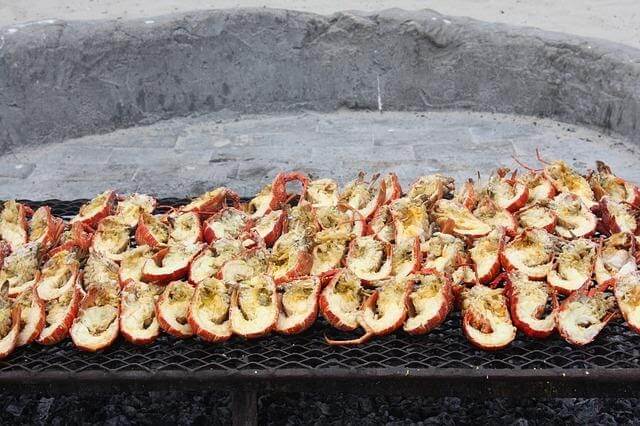 Photo by unserekleinemaus licensed under Pixabay license
Photo by unserekleinemaus licensed under Pixabay license
Although one of the most common methods for cooking lobster is boiling, there’s a whole range of other ways to prepare it that are just as quick and convenient. Boiling is a method of wet heat cooking, but dry heat methods are sometimes preferable when you’re cooking specific types of lobster, especially stuffed lobster.
What is Dry Heat Cooking?
Dry heat cooking refers to any cooking method in which dry heat is used, like baking, broiling, roasting, or grilling. Wet heat, on the other hand, uses water or moisture from water to cook meat, like boiling or steaming. You can learn more about the differences between dry heat and wet heat cooking in this article on Lobster University.
It’s typically a simple process to add lobster to the oven or grill to complete the dry heat cooking process, but it can be easy to dry out meat due to a lack of moisture in the cooking process. Lobster is especially finicky when it’s getting cooked; just a couple of minutes too long can turn the tender, flavorful meat into meat that’s tough, chewy, and not so appealing.
Using Dry Heat to Cook Lobster
These tips can help you cook your lobsters to perfection using your preferred dry heat method.
Tip #1: Boil or Steam Lobsters First
Although you’ll usually buy lobsters live for safety purposes, you’ll want to avoid cooking them in dry heat from their live state. It’s quicker and much more humane to use a wet heat method, like boiling or steaming, first for live lobsters to cook them, and then finish the cooking process with a dry heat cooking method.
Doing so also keeps lobster meat more tender, as cooking in dry heat for too long tends to toughen up the meat.
Tip #2: Think of Dry Heat as the Finishing Touch
Dry heat cooking with lobster is something you should only use as a finishing method for your lobster. Once you cook the meat, grilling, roasting, or broiling can help you bring the final touches to your dish, like browning up the meat or getting that crispy crust on stuffing. It shouldn’t take you longer than just a few minutes in the oven or broiler to wrap up the cooking process.
Tip #3: Keep Air Circulating
When air doesn’t circulate enough on the grill or in the oven, you might get some spots that are fully cooked, while others still have a few more minutes to reach a safe temperature, leaving some parts of the meat tougher than others.
It’s best to place lobsters on top of a roasting rack with holes for air circulation before putting them in the oven or on the grill to make sure air can get to all areas for a quicker, more thorough cook.
Tip #4: Dress It Up with Butter
Butter’s your best friend when cooking lobster. Not only does it add to the already fantastic flavor of Maine lobster, but it also keeps lobster meat moist when it cooks. Drizzle some butter over your lobsters before popping them on the grill or in the oven to keep the crave-worthy texture intact.
Dry Heat Lobster Cooking
When you order fresh Maine lobster, you want to enjoy every bit of what you pay for. The way to do that is to know your cooking methods and how to do them correctly. Dry heat cooking is an excellent way to brown lobster meat or cook a stuffed lobster meal; now you know how to do it without drying out the lobster.
At Maine Lobster House, you’re guaranteed to get some of the best lobster your money can buy in every delivery, making it even easier to get the perfect results when you cook! Learn more about the Maine Lobster House Difference here.

